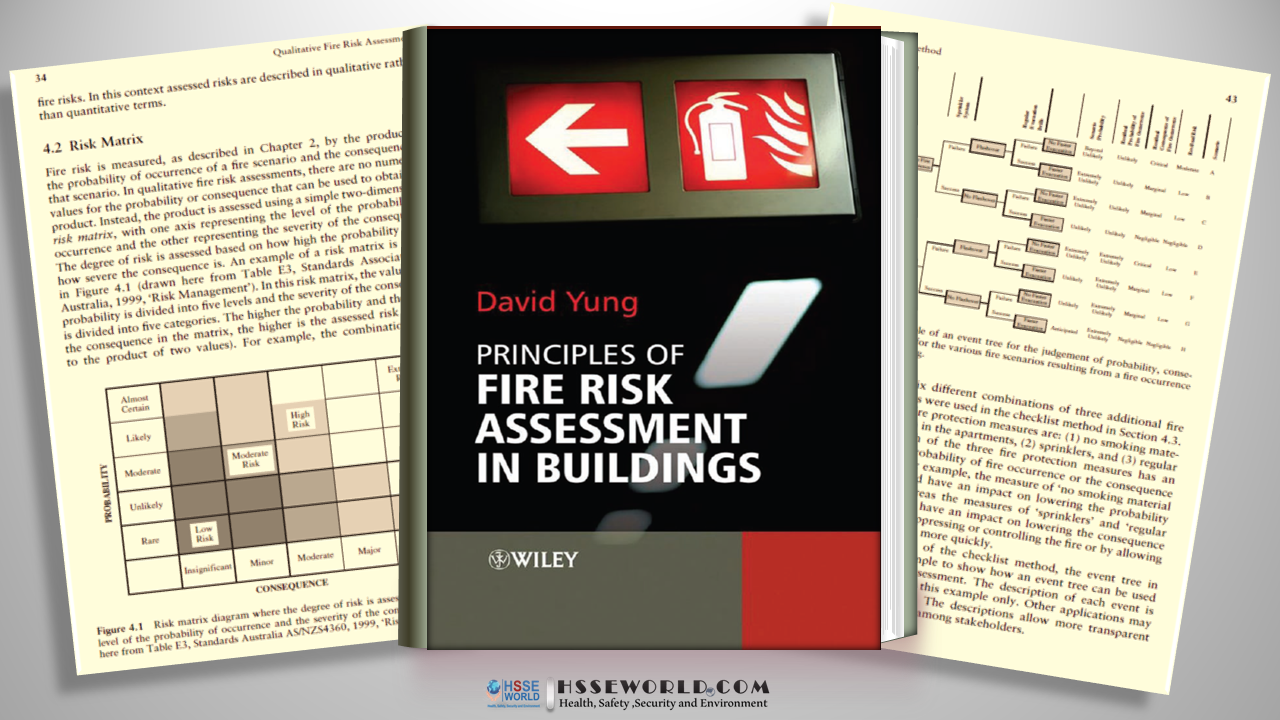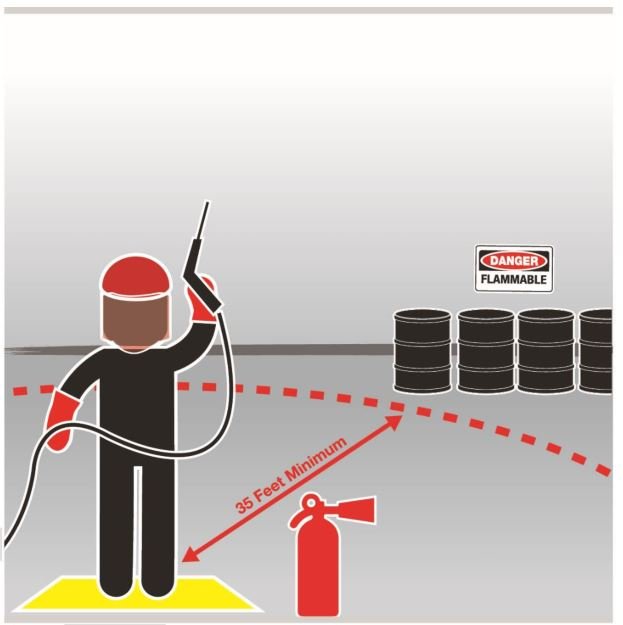Firefighters are the unsung heroes who face dangerous and life-threatening situations regularly. Their bravery and dedication to safeguarding lives and property make them an indispensable part of any community. However, fighting fires comes with inherent risks, which is why firefighters rely on a specialized set of personal protective equipment (PPE) to shield themselves from the dangers they encounter on the frontlines. In this blog post, we will delve into the world of firefighting PPE and explore the essential ensemble designed to protect and empower these courageous individuals. From head to toe, we will examine the top gear used by firefighters to mitigate the risks they face and enhance their safety in the line of duty.
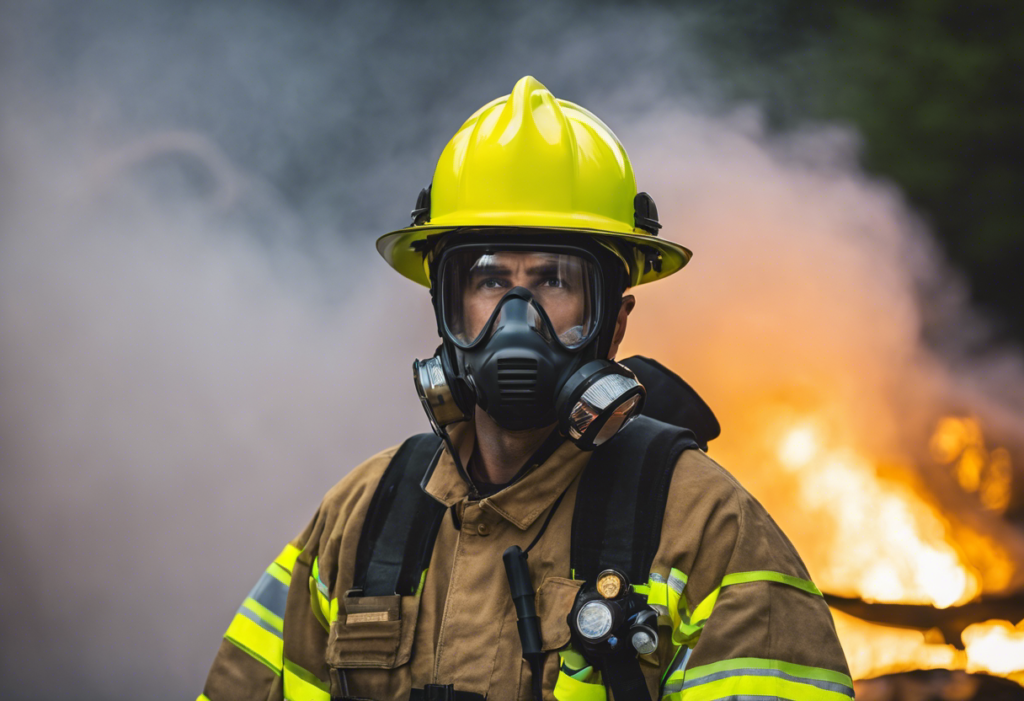
Introduction to Firefighters’ Personal Protective Equipment (PPE)
As a dedicated professional in the field of fire and rescue services, I am acutely aware that the job of a firefighter is inherently fraught with peril. Every call to duty is unpredictable, presenting a unique set of challenges that require both courage and the right equipment. This is where Personal Protective Equipment, or PPE, becomes the cornerstone of my occupational safety.
The consistently evolving nature of firefighting demands that I am equipped with PPE that adheres to stringent safety standards. My PPE ensemble is tailored to shield me from the extreme environments that I might encounter, from raging infernos to toxic smoke and debris.
The PPE of a firefighter includes several integral components:
- Helmet: Vital for head protection, it includes a visor for face shielding and sometimes a flashlight for visibility in smoke-filled environments.
- Protective Hood: An additional layer worn underneath the helmet and coat to provide thermal protection for the neck and ears.
- Coat and Pants: Typically made of fire-resistant fabrics like Nomex, these are designed with a three-layer system to offer resistance to heat, cuts, and water.
- Gloves: Fire-resistant gloves ensure dexterity and protect my hands from burns, cuts, and exposure to harmful chemicals.
- Boots: Rugged, steel-toed boots with puncture-resistant soles secure my footing and guard my feet against falling debris and sharp objects.
- Self-Contained Breathing Apparatus (SCBA): This is the lifeline in hostile environments, supplying clean air and protecting against smoke inhalation.
- Personal Alert Safety System (PASS): Worn on my gear, this device emits a loud signal if I become immobile, indicating an emergency.
My PPE must offer a delicate balance between protection and mobility, as too much of the former can burden me with weight and heat, impeding the crucial quickness and agility essential for rescue operations. Understanding the complexity and capabilities of my gear is vital to my effectiveness and survival on the job.
The Evolution of Firefighting Gear over the Years
As I delve into the history of firefighting, it’s notable to see how the gear worn by firefighters has evolved dramatically, driven by advances in technology and an increasing understanding of the dangers posed by fires.

In the early days of firefighting, protection was rudimentary. Materials like wool and leather were common, offering minimal protection against heat and virtually no protection from the toxic smoke and chemicals released by fires. Helmets were often made from leather as well and offered some protection against falling debris.
By the mid-20th century, the introduction of synthetic materials marked a significant step forward in the evolution of PPE. Fabrics such as Nomex, developed in the 1960s, provided improved resistance to heat and flames. These innovations also allowed for the gear to be lighter, enabling firefighters to move more freely.
In the 1970s and 1980s, further enhancements included the introduction of self-contained breathing apparatus (SCBA) systems. These not only provided clean air to breathe but also protected firefighters’ faces from exposure to high heat and harmful gases.
Advancements in technology have also seen improvements in communication devices integrated into gear, thermal imaging cameras, and the incorporation of electronic safety devices that alert others when a firefighter is motionless or in distress.
Today’s firefighting gear is a far cry from the past. It includes multiple layers designed to insulate, protect against moisture, resist cuts and punctures, and reflect heat. Moreover, the design is ergonomically tailored to enhance mobility and reduce fatigue, all while continuing to improve on thermal protection.
Every piece of gear, from helmets equipped with visors and thermal protection to boots designed to resist chemicals and punctures, is a testament to the deep commitment to safety that governs the evolution of firefighting equipment. The continuous development of PPE ensures that firefighters are armed with the best possible protection as they bravely confront the perils before them.
Read-free-download-common-firefighter-job-interview-questions-and-answers
Helmets and Hoods: Protecting the Head from High Temperatures and Debris
As a firefighter, I’m acutely aware that my head is one of the most vital parts of my body to protect. That’s why the helmet and hood are critical pieces of my personal protective equipment (PPE). The helmet is designed not only to shield my skull from impacts but also to provide some measure of protection against heat and water.
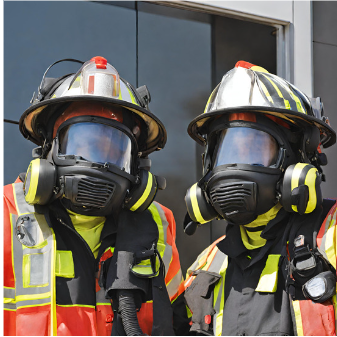
- Structure of the Helmet: My helmet is typically made of heat-resistant materials like Kevlar or fibreglass, with a reflective surface to deflect radiant heat. The design also includes a protective brim to channel water and debris away from my face.
- Face Protection: Attached to the helmet, a face shield or goggles safeguard my eyes from smoke and flying debris, while maintaining clear vision is crucial in navigating through blazing environments.
- Hoods: Beneath the helmet, I wear a specialized hood. These hoods are made of flame-resistant fabrics such as Nomex or PBI and are designed to protect the areas not covered by the helmet, particularly my neck and ears.
- Thermal Resistance: The material of the hood provides a barrier against intense heat and helps to prevent burns from hot gases and flame impingement.
- Communication: A vital aspect of the helmet is its compatibility with communication devices. This ensures I can maintain critical contact with my team, command post, or dispatchers amidst the chaos.
- Customization: Helmets may also offer adjustable interior padding for comfort and a personalized fit, ensuring it stays securely in place as I move.
Every time I gear up, donning my helmet and hood offers me peace of mind, knowing that I’m well-protected from the dangers above. These elements of my gear allow me to focus on the critical task at hand—fighting fires and saving lives—while providing me with the best defense against the fierce elements I face.
The Importance of Fire-Resistant Gloves in Ensuring Dexterity and Protection
As a firefighter, I am acutely aware that my hands are crucial tools in life-threatening situations. Fire-resistant gloves are not just a part of my ensemble; they are essential for my safety and effectiveness on the job. These gloves are designed to perform two critical functions: protecting my hands from the extreme heat and flames we often encounter and preserving my manual dexterity.
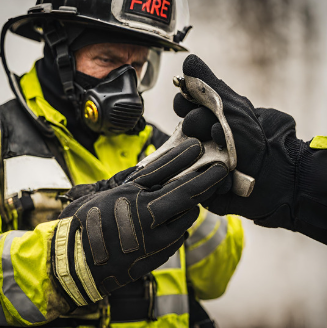
- Protection Against High Temperatures and Cuts: Fire-resistant gloves are made of materials that can withstand intense heat and provide insulation against the dangers of direct flame contact. They also protect against sharp objects and debris, which are common in fire and rescue situations.
- Preservation of Dexterity: It’s equally vital for these gloves to allow for as much natural hand movement as possible. I need to be able to manipulate tools, operate equipment, and perform delicate tasks such as handling victims in need of assistance.
Maintaining a balance between protection and dexterity can be challenging. Glove manufacturers often use a combination of materials like Kevlar, Nomex, and silicone to achieve this dual function. I have experienced how gloves with multiple layers offer better thermal protection but can be bulkier, which may hinder fine motor skills.
Conversely, too thin a glove may not provide adequate protection in a rapidly changing, high-heat environment. That’s why the selection process is critical, and ongoing research into better materials and glove construction is crucial in firefighting technology.
As advancements continue to be made, the gloves we use are becoming more resistant to wear and tear, allowing for longer use while maintaining high safety standards. The continuous evolution of fire-resistant gloves is a testament to the relentless pursuit of safety and functionality in the world of firefighting PPE.
Turnout Gear: The Critical Layers of a Firefighter’s Ensemble
As a firefighter, my turnout gear is an essential element of my personal protective equipment (PPE), comprising several critical layers designed to shield me from the extreme conditions I encounter in the line of duty. The layers include:
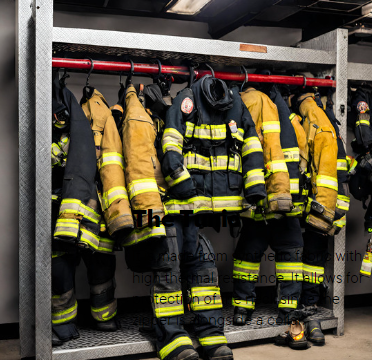
- Outer Shell: The first line of defense is a tough, flame-resistant material, often made from a blend of Kevlar and Nomex. It repels water and protects against cuts, abrasions, and high temperatures.
- Moisture Barrier: Beneath the outer shell, a moisture barrier is geared toward stopping water and chemicals from soaking through while allowing perspiration to evaporate, thus keeping me dry and reducing the risk of steam burns.
- Thermal Barrier: The innermost layer is the thermal barrier, which is critical for insulation. This quilted layer traps air, an excellent insulator, to reduce the transfer of heat to my body.
- Comfort Layer: Although not present in all turnout gear, some incorporate a fourth comfort layer for improved fit and flexibility, essential for the wide range of motion required when I’m on duty.
Each layer plays a vital role in protecting me against heat, flames, and other hazardous materials. The materials are chosen for their combination of lightweight, flexibility, and protection to ensure that while I am shielded from the dangers of the fire, I can still move freely to perform rescues, operate equipment, and navigate complex environments.
Moreover, the interfaces between my turnout gear—where my gloves meet my jacket sleeves, or my boots meet my trouser legs—are reinforced to minimize any gaps where heat and contaminants could potentially penetrate. Keeping these interfaces snug and secure is of paramount importance to my safety on the fireground.
Boots on the Ground: The Role of Footwear in Firefighter Safety
As a firefighter, I understand that my boots are not just an accessory; they’re a critical component of my personal protective equipment (PPE) ensemble. When I step into a burning building, I rely on my footwear to provide several layers of defense against the extreme conditions we face.
- Protection from Heat and Flames: My boots must withstand tremendously high temperatures. They are made from flame-resistant materials that don’t melt or degrade when exposed to intense heat, shielding my feet from burns.
- Puncture and Impact Resistance: In debris-cluttered environments, sharp objects and heavy falling items are hazards. The reinforced soles and steel-toe caps of my boots are designed to protect my feet from these potential injuries.
- Slip Resistance: Fire scenes can be slick with water, chemicals, or other liquids. My boots feature slip-resistant soles, which are crucial for maintaining my balance and preventing falls that could be catastrophic while working in such unpredictable environments.
- Support and Comfort: Given the hours I spend on my feet, my boots must also offer proper support. They are designed to cushion and support my arches, promoting good posture and reducing fatigue. Comfort is not a luxury; it’s essential for maintaining my focus and physical readiness during long shifts.
- Waterproofing and Chemical Resistance: I encounter water and various chemicals regularly. My boots are treated to be waterproof and resistant to chemicals, ensuring my feet stay dry and protected against corrosive substances.
To illustrate, even a seemingly minor feature such as the closure system of my boots can make a significant difference. I need to be able to put on and remove my boots swiftly; therefore, they often have a combination of zippers and laces or quick-release buckles to make this possible.
In short, I think of my boots as my foundation. They are a critical tool that allows me to move confidently and safely as I perform my duty to protect life and property.
Self-Contained Breathing Apparatus (SCBA): A Lifeline in Smoke-Filled Environments
As a firefighter, I recognize that self-contained breathing apparatuses (SCBAs) are indispensable when navigating through smoke-filled environments. These devices provide me with the clean air critical for survival amidst toxic fumes and particulates. An SCBA typically comprises a high-pressure tank, a pressure regulator, and an inhalation connection connected to a full face mask, offering respiratory protection and clear vision—a necessity for situational awareness.
When I don my SCBA, there are several key procedures I always follow:
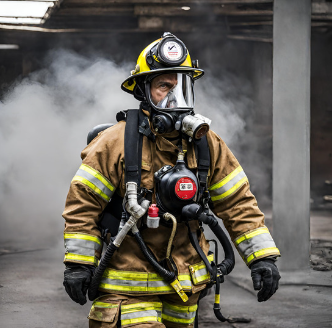
- Inspection: Before entering a hazardous area, I meticulously check my SCBA. This includes ensuring the air tank is fully charged and that all connections are secure.
- Donning: The SCBA must be worn correctly to provide the necessary protection. I make sure the harness fits snugly and that the face mask forms a tight seal to prevent smoke infiltration.
- Buddy Checks: Partnering with another firefighter, we check each other’s equipment to double-ensure everything is operational.
- Communication: My SCBA is equipped with a communication system, allowing me to stay in contact with my team, an essential feature when visibility is low and conditions are disorienting.
The SCBA does not solely safeguard my lungs; it also lends me confidence in dangerous scenarios. With secure knowledge that I am backed by reliable equipment, I can focus on the critical task at hand—saving lives and extinguishing fires. Every second count, and the SCBA’s efficient design is conducive to quick reactions and efficient maneuvering, despite the encumbrance of heavy gear.
SCBAs are indeed the lifeline for firefighters like myself—it is not an overstatement to say that our lives, as well as the lives of those we rescue, often hinge on the proper functioning of these vital devices.
Read more: https://hsseworld.com/what-is-a-self-contained-breathing-apparatus/
Advances in PPE: Technological Enhancements for Increased Safety and Efficiency
Protective gear has undergone remarkable transformations, leveraging cutting-edge technology to ensure safety and efficiency for firefighters like myself. Here are some of the most significant advancements in personal protective equipment (PPE):
- Smart Helmets: Incorporating augmented reality, these helmets provide critical information directly in my line of sight, such as the layout of a burning building or location of hazards.
- Enhanced Materials: The use of lightweight, heat-resistant textiles not only offers superior protection against extreme temperatures but also improves mobility and comfort, crucial for the long hours I spend on a scene.
- Breathable Fabrics: Advanced fabrics that wick away sweat and allow for air circulation are crucial. They reduce the risk of overheating and dehydration, which can be just as dangerous as the flames we fight.
- Wearable Sensors: These sensors monitor vital signs and external conditions, alerting command centers to potential health issues or environmental dangers—communication that can save lives in critical moments.
- Drones and Robotics: While not worn, these tools are part of our extended PPE system. Drones offer aerial reconnaissance, which helps in strategizing firefighting efforts and ensures that we’re not stepping into blind danger.
- Improved Communication Systems: Embedded devices in our gear aid in clear, hands-free communication over the roar of fires, which is essential when coordinating team movement and efforts.
These advancements are not just about technology for technology’s sake. They represent a commitment to evolving the firefighting profession, constantly prioritizing our safety and the efficiency with which we can perform our life-saving tasks. I can attest that this progress in PPE technology provides a greater sense of security and enables us to perform at our best in the most harrowing conditions.
Also Read: improving-emergency-fire-response-by-using-technology/
Maintenance and Care: Extending the Life of Firefighter PPE
As part of my commitment to safety and professional responsibility, I recognize the importance of proper maintenance and care for my Personal Protective Equipment (PPE). Extending the life of PPE not only ensures maximum protection but also represents a significant cost saving for my department. I adhere to the following practices to maintain my gear:
- Regular Cleaning: After each use, I ensure that all components of my PPE are cleaned according to the manufacturer’s instructions. This prevents the buildup of harmful contaminants that can degrade materials and potentially expose me to toxins.
- Inspection: Before and after use, I conduct a thorough inspection of my PPE. This includes checking for rips, tears, thermal damage, and signs of wear and tear. Should any element of the gear fail this inspection, it is immediately reported and taken out of service.
- Proper Storage: I store my PPE in a well-ventilated and clean area away from direct sunlight and extreme temperatures. This helps avoid material degradation and extends the lifespan of the gear.
- Following Guidelines: Each piece of PPE comes with specific maintenance guidelines provided by the manufacturer. I ensure I familiarize myself with and follow these instructions carefully to maintain the integrity of the equipment.
- Recording Maintenance: Keeping a log of cleaning, maintenance, and inspections is vital. This not only helps in keeping track of the gear’s condition but also serves as a guide for scheduled replacements.
By rigorously following these maintenance routines, I can trust that my PPE will perform effectively when it matters most, protecting not only my own life but also the lives of others whom I serve.
Also Read:https://hsseworld.com/designing-an-effective-ppe-program-5-tips/
Training with PPE: Ensuring Readiness Through Realistic Simulations
As a firefighter, I understand that the effectiveness of my gear during an emergency is only as good as my familiarity with it. That’s why training with Personal Protective Equipment (PPE) is not just a recommendation; it’s a necessity for ensuring readiness and safety. Realistic simulations are crucial to this training, for several reasons.
Firstly, they allow me to experience the weight and restriction of full PPE in a controlled environment. This includes donning the heavy protective coat, pants, boots, gloves, helmet, and self-contained breathing apparatus (SCBA). It’s important for me to get accustomed to the added weight and decreased mobility, and simulations provide the perfect opportunity for this.
During simulations, I also practice critical tasks such as:
- Navigating through smoke-filled environments: Simulated smoke conditions help me learn to rely on other senses when visibility is compromised.
- Rescue operations: Practicing with mannequins in PPE helps me prepare for the physical demands of carrying victims to safety.
- Equipment handling: Simulations allow for repetitive practice of deploying hoses, operating nozzles, and using other firefighting tools while fully geared.
Moreover, by training in my PPE, I refine my ability to communicate effectively despite the muffling effect of my facepiece and the noise of the scene.
Another vital aspect is the exposure to simulated heat and fire scenarios. These high-stress environments help me acclimate to the psychological and physical stresses that I will face in real fires.
Repetitive training in my PPE under realistic conditions hones my skills, ensuring that when an emergency strikes, my gear feels like a second skin and I can perform my duties effectively, without hesitation. This readiness is paramount—not just for my safety, but for the safety of those I’m sworn to protect.
International Standards for Firefighter PPE: A Global Perspective on Safety
Ensuring the safety of firefighters across the globe requires a uniform set of standards that manufacturers and fire departments can adhere to when designing, testing, and utilizing personal protective equipment (PPE). I recognize that these standards not only protect the lives of those who confront fire and other hazardous conditions but also facilitate international cooperation and aid during large scale emergencies.
- The International Organization for Standardization (ISO) has developed the ISO 11613-1:2017 standard, which delineates requirements for protective clothing for firefighters, including parameters for heat and flame resistance.
- Another crucial standard is the NFPA 1971: Standard on Protective Ensembles for Structural Fire Fighting and Proximity Fire Fighting, set by the National Fire Protection Association, which is widely utilized, even outside the United States, for its comprehensive guidelines on gear performance.
- The European Committee for Standardization (CEN) has also established the EN 469 standard that provides a benchmark for protective clothing for firefighters, focusing on aspects like material behavior in heat exposure and ergonomic requirements.
While these international standards provide a foundation for firefighter safety, challenges such as variations in regional adoption, cost constraints for developing nations, and the need for continuous evolution of standards in response to new hazards and technologies are evident. Nonetheless, these standards serve as a testament to a collective commitment to safeguarding firefighters everywhere. I understand that ensuring uniform compliance and fostering continuous innovation in safety technology remain imperative to the future of global firefighter protection.
Conclusion: The Essential Role of PPE in Upholding Firefighter Bravery and Safety
As a firefighter, I understand intimately that personal protective equipment (PPE) is not just a requirement for the job—it is our lifeline. It underpins the valor we exhibit when facing the infernos that threaten our communities. In the blaze-engulfed realities of our work, PPE stands as a testament to the commitment to safety and survival.
- Protection Against Extreme Temperatures: Our turnout gear, including the heat-resistant coats and trousers, shields us from the searing heat of fires. The thermal insulation it provides is paramount, allowing me to enter and navigate through scorching environments safely.
- Breathing Apparatus: The self-contained breathing apparatus (SCBA) is another critical element of my gear. It ensures that I am inhaling clean air amidst the toxic fumes and smoke, protecting my respiratory system from the harsh elements of combustion.
- Communication Systems: Integrated communication devices within my helmet help maintain crucial lines of dialogue with my team. This ensures not just individual safety, but the operational coherence of our unit.
- Visibility and Mobility: My helmet’s visor and lighting systems enhance visibility in dense smoke, while the gloves and boots I wear preserve dexterity and protect against sharp and falling objects, ensuring my mobility is not compromised.
I can attest that the ensemble of PPE is vital in uplifting the confidence of firefighters. It empowers us to confront menacing flames, reinforcing the bravery innate to our roles. For us, PPE does more than guard against physical perils; it also serves as armour for our resolve, enabling us to step forward when others step back. Without a doubt, PPE is essential in the noble cause of protecting life, property, and the environment from the ravages of fires.



